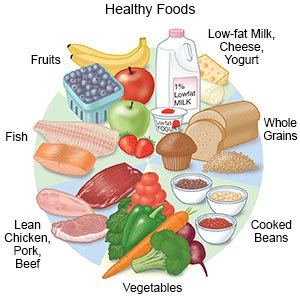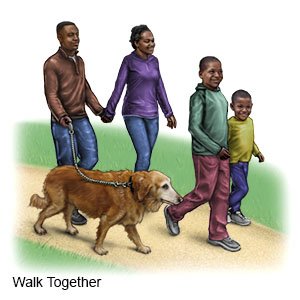Chronic Post Traumatic Headache
Medically reviewed by Drugs.com. Last updated on Aug 4, 2025.
What do I need to know about a chronic post-traumatic headache (CPTH)?
A CPTH usually develops within 7 days of a head injury and lasts longer than 3 months. A CPTH can also be a symptom of a more serious condition called post-concussion syndrome (PCS). PCS is a group of symptoms that affects your nerves, thinking, and behavior.
What increases my risk for a CPTH?
- Age older than 40 years or being male
- Whiplash
- A concussion
- A history of headaches before the injury, especially if you had migraines
- A craniotomy (surgery to remove part of the skull bone)
What are the signs and symptoms of a CPTH?
- Mild to severe headaches that affect both sides of your head and may pulsate
- Pain that happens almost every day or is worse with activity
- Neck pain
- Nausea or vomiting
- Trouble concentrating or remembering things, depression, or anxiety
- Being sensitive to light or noise
- Dizziness, trouble sleeping, or fatigue
How is a CPTH diagnosed?
Your healthcare provider will ask questions about your headache. Tell your provider about your head injury and if you lost consciousness after the injury. Your provider may also ask if you had any memory loss from the injury. Describe where you feel the pain, how severe it is, and how long it lasts. Include anything that helps or makes the pain worse. You may need any of the following to treat a CPTH:
- A neurologic exam will show how well your brain works. Your provider will check how your pupils react to light. Your memory, hand grasp, and balance may also be checked.
- A CT or MRI may show the cause of your headaches. You may be given contrast liquid to help your brain show up better in the pictures. Tell the provider if you have ever had an allergic reaction to contrast liquid. Do not enter the MRI room with anything metal. Metal can cause serious injury. Tell the provider if you have any metal in or on your body.
How is a CPTH treated?
- Pain medicines can help prevent or treat headache pain. Headache pain is easier to control if you take pain medicine as soon as you start to feel pain. You will need to limit pain medicines to prevent a condition called rebound headaches. Your provider will tell you when and how often to take pain medicine. You may need any of the following:
- Prescription pain medicines may be given to control or prevent headache pain. Your provider will tell you which medicines may work for you.
- NSAIDs , such as ibuprofen, help decrease swelling, pain, and fever. This medicine is available with or without a doctor's order. NSAIDs can cause stomach bleeding or kidney problems in certain people. If you take blood thinner medicine, always ask your healthcare provider if NSAIDs are safe for you. Always read the medicine label and follow directions.
- Acetaminophen decreases pain and fever. It is available without a doctor's order. Ask how much to take and how often to take it. Follow directions. Read the labels of all other medicines you are using to see if they also contain acetaminophen, or ask your doctor or pharmacist. Acetaminophen can cause liver damage if not taken correctly.
- Medicines may be given to control nausea or vomiting.
Treatment options
The following list of medications are related to or used in the treatment of this condition.
Related medications
What can I do to manage my symptoms?
- Eat a variety of healthy foods. Healthy foods include fruits, vegetables, whole-grain breads, low-fat dairy products, beans, lean meats, and fish. Do not eat foods that trigger your headaches.

- Exercise regularly. Exercise helps decrease stress and headaches. Ask about the best exercise plan for you.

- Do not drink alcohol. Alcohol can trigger a headache. It can also prevent medicines from being able to stop your headache.
- Do not smoke. Nicotine and other chemicals in cigarettes and cigars can trigger a headache. Ask your provider for information if you currently smoke and need help to quit. E-cigarettes or smokeless tobacco still contain nicotine. Talk to your provider before you use these products.
- Drink liquids as directed. You may need to drink more liquid to prevent dehydration. Dehydration can trigger a headache. Ask your provider how much liquid to drink each day and which liquids are best for you.
- Set a regular sleep schedule. A lack of sleep can trigger headaches or make them worse. Go to bed and wake up at the same times each day. Talk to your provider if you are having trouble sleeping.
- Keep a headache record. Include when they start and stop and what made them better. Describe your symptoms, such as how the pain feels, where it is, and how bad it is. Record anything you ate or drank for the past 24 hours before your headache. Bring this to follow-up visits.
- Apply heat as directed. Heat helps relieve headache pain and muscle spasms. Use a heat pack or a heating pad on a low setting. Cover the heating pad with a towel before you place it on your skin. Apply heat on the area for 20 to 30 minutes every 2 hours for as many days as directed.
- Apply ice as directed. Ice helps relieve headache pain. Use a cold pack or put crushed ice in a plastic bag. Cover the bag with a towel before you place it on your skin. Apply ice for 15 to 20 minutes every hour for as many days as directed. Your provider may recommend that you alternate heat and ice.
Where can I find support and more information?
- Brain Injury Association
1608 Spring Hill Road
Vienna , VA 22182
Phone: 1- 703 - 761-0750
Phone: 1- 800 - 444-6443
Web Address: http://www.biausa.org
Call your local emergency number (911 in the US) or have someone call if:
- You cannot be woken.
- You have a seizure.
When should I seek immediate care?
- You have a sudden headache that seems different or much worse than your usual headaches.
- You have sudden changes in your vision.
When should I call my doctor?
- You have headaches more often, or your pain is more severe.
- You have pain that starts when you strain or change your position.
- You have headaches that wake you during the night.
- You have pain that is not helped with pain medicines.
- You always have pain on the same side of your head.
- You have questions or concerns about your condition or care.
Care Agreement
You have the right to help plan your care. Learn about your health condition and how it may be treated. Discuss treatment options with your healthcare providers to decide what care you want to receive. You always have the right to refuse treatment. The above information is an educational aid only. It is not intended as medical advice for individual conditions or treatments. Talk to your doctor, nurse or pharmacist before following any medical regimen to see if it is safe and effective for you.© Copyright Merative 2025 Information is for End User's use only and may not be sold, redistributed or otherwise used for commercial purposes.
Learn more about Chronic Post Traumatic Headache
- Advil Dosage Charts for Infants and Children
- Dosage Charts for Infants and Children
- Motrin Dosage Charts for Infants and Children
- Top 9 Things You Must Know About Naproxen
- Tylenol Dosage Charts for Infants and Children
- What are the risks of mixing pain medications and alcohol?
Treatment options
Care guides
Symptoms and treatments
Further information
Always consult your healthcare provider to ensure the information displayed on this page applies to your personal circumstances.
